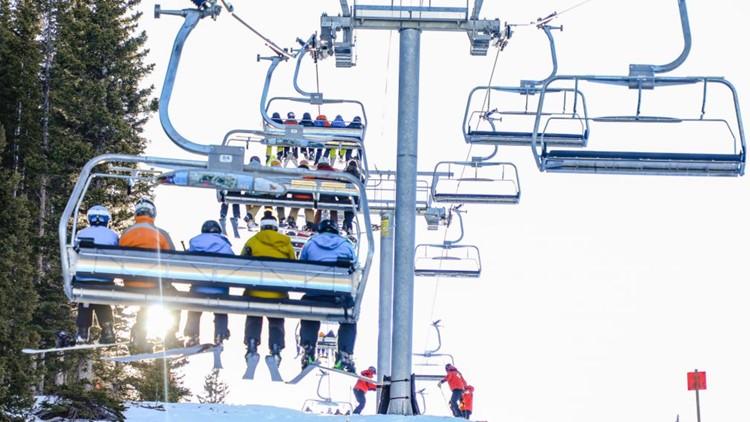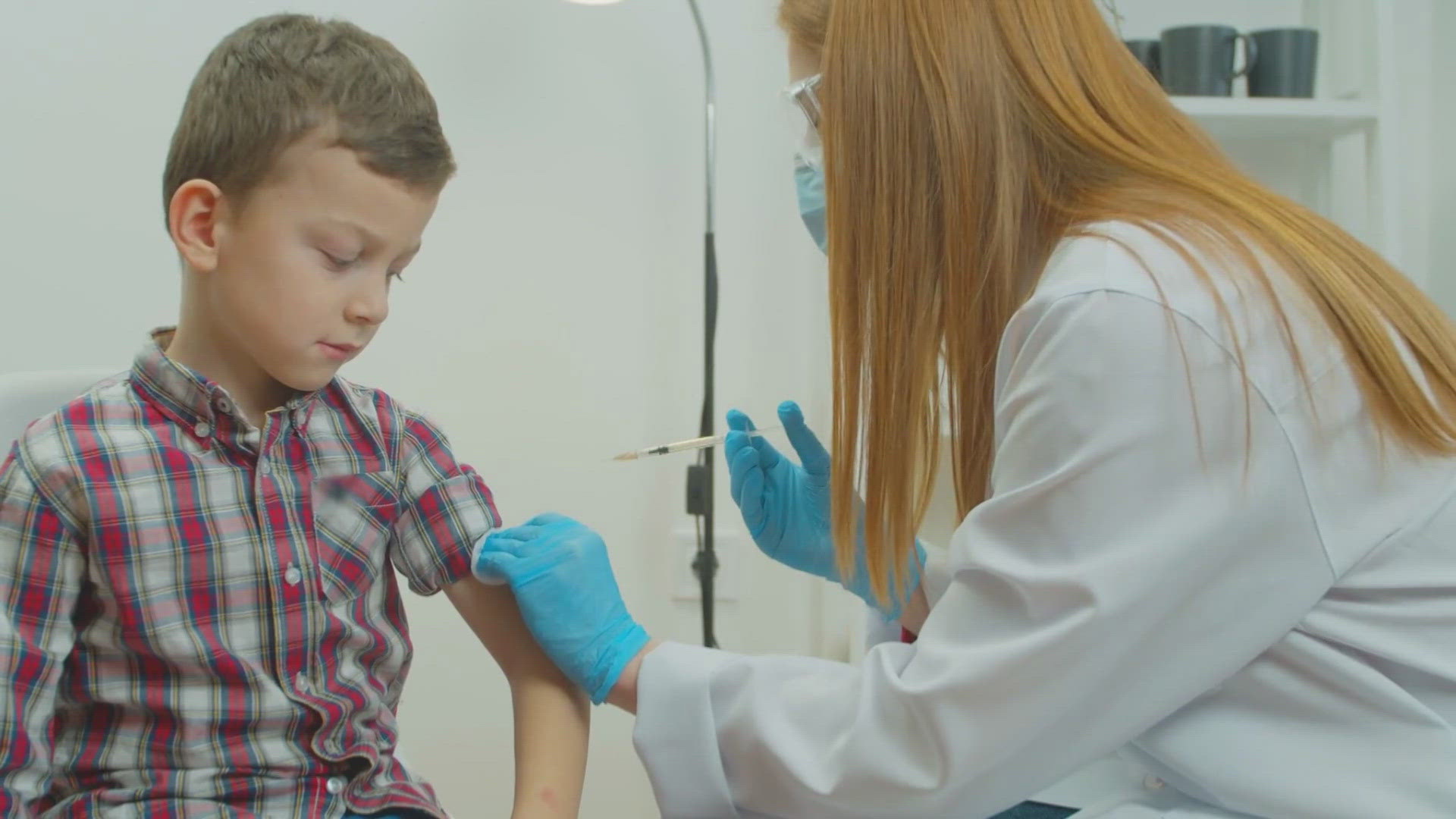VAIL, Colo — In a typical year, the Vail Chamber and Business Association’s annual meeting before the start of the ski season is a light, upbeat affair previewing the winter to come. But in a year that has been anything but typical, Thursday’s virtual meeting for Vail businesses, town leaders and resort officials contained some heavy news.
Simply stated, COVID-19 transmission in Eagle County is at its highest point since the onset of the pandemic. With the start of the local ski season just a week away, and the holidays right behind, the window is narrowing to turn things around for the winter season that local businesses are banking on.
“We need to level this off and go down,” Harmon said. “That window is getting more narrow. We’ve done this before. We did this in August. This is really important for us to have a healthier winter with less disruption for all of you.”
This story is powered by COLab, the Colorado News Collaborative. 9NEWS joined this historic collaboration with more than 40 other newsrooms across Colorado to better serve the public.
Harmon said the county, given its current trajectory, expects to be put in the orange, high-risk phase of the state’s COVID-19 dial within days, which will impact local businesses in terms of capacity limits. If the county goes red, the return of stay-at-home order looms.
Heath Harmon, Eagle County’s public health director, told those on Thursday’s call that incident rates of COVID-19 transmission currently exceed the county’s two previous spikes in March and July and were still on the rise as of Thursday morning.
In the orange phase of the state’s dial, local restaurants, gyms, retail stores and personal service businesses can only operate at 25% capacity, or less than 50 people. The same goes for indoor events.
Will Cook, the CEO and president of Vail Health, made the appeal that coming together as a community to slow the spread of the virus is absolutely necessary for the well-being of the state’s health care ecosystem and the local economy.
“It’s a difficult time,” Cook said. “We’re fatigued. As a business owner, it’s frustrating when we’ve all been working so hard, spending time and money and resources to protect everybody, to keep our businesses open, and we have this resurgence from private gatherings. We are paying the price for what people are doing in their personal time.”
That said, Cook said everyone doing their part to follow public health guidelines and adhering to the five commitments of containment to flatten the curve is about doing what’s best for the whole.
“This is not a political issue,” Cook said. “It’s a reality that we’re facing.”
Cook, who before taking the top job at Vail Health served as the CEO of University of Colorado Hospital, said he’s in constant contact with Front Range hospital officials, and that the state’s hospitals are currently stressed more than they’ve been at any time during the pandemic.
Vail Health Hospital had just one COVID-19 patient in its care on Thursday morning, he said, but had between four and five patients a week ago, and those numbers could jump quickly.
“We’re proud of the level of care in our hospital, but for someone who is deathly, acutely ill, we do need to transfer them to a higher level of care in Denver, and they are currently full,” Cook said. “Everybody there is already full.”
Staying on message
Town of Vail officials, coming off the Town Council’s passage of a mask mandate in the resort villages, stressed the importance of the town, local businesses and the resort being aligned in messaging for both residents and guests.
“We look at what’s going on around the state, and we really felt that it was critical to make that policy and do anything to parallel the policies of Vail Resorts,” said Scott Robson, Vail’s town manager. “Visitors and locals, when you get off the bus, out of your car, there’s one clear set of policies that you can follow as you walk up Bridge Street to the gondola. … It’s just to be able to send a clear message to visitors: Safety is first. We’ve got to bring our infection rates down to have a successful ski season.”
Mayor Dave Chapin, who contracted the virus in March at the height of the first wave, praised the Vail business community for pulling off a successful summer in the midst of a pandemic. And he struck an optimistic tone when he said he was confident that the business community and local residents could band together again to lower case numbers and ensure a successful winter season.
“Health and safety of the local citizenry,” Chapin said. “That’s the town of Vail’s priority.”
The town’s directives are simple: “Keep Vail Safe and Open” and “We Got This” will be prevalent throughout both Vail and Lionshead villages, in town buses and online.
The town of Vail is stressing a unified message among its business community and the resort entering the ski season.
Screen grab
The town of Vail is stressing a unified message among its business community and the resort entering the ski season.
Those messages certainly align with Vail Resorts’ approach to the season, said John Plack, who oversees communications for Vail and Beaver Creek. Plack said the resort operator is measuring its success this year “by opening and staying open.”
To do that, Vail Resorts has spent eight months rethinking the entire resort experience, from its new reservation system to control crowds to lift loading to on-mountain dining to ski school to renting equipment. The list goes on and on.
The recent snow, including Wednesday’s storm, have made for great snowmaking conditions, Plack said, and Vail Mountain officials are hopeful that all three mountain portals — Golden Peak, Vail Village and Lionshead — will be able to offer top-to-bottom skiing on Nov. 20, Vail’s targeted Opening Day. Beaver Creek’s targeted opening is Nov. 25.
Plack said the biggest point of emphasis as Vail Resorts has filled out its seasonal workforce is making sure new employees take the safety messaging home with them.
It’s not enough just practicing social distancing and wearing a mask on the mountain, he said. Vail Resorts employees need to be vigilant off the job to keep the mountain open and ensure a safe experience for guests, he said.
A toolkit for success
Mia Vlaar, the town’s economic director, said Vail’s Winter Business Toolkit has everything local businesses need to ensure a successful start to the season.
“The important part here, everything we’re doing this winter is going to take a little more planning, more time,” Vlaar said. “These are tools to communicate with guests before they arrive in Vail, for dining, restaurants, transit. They’re mechanisms to support that journey when they get here.”
Vlaar said the town is also launching and hiring staff for a guest service advocate program. Ambassadors in the resort villages will help instruct guests on how to get on the mountain, how to make a skiing reservation, and pretty much anything else that has to do with “making them feel safe,” Vlaar said.
“We’re trying to make those transitions a little easier,” she said. “We are looking for people to help for two-and-a-half to three hours in the mornings with the movement from buses onto the mountains.”
RELATED: Breckenridge and Keystone employees voice concerns about health protocols, employee housing
Occupancy outlook
Vlaar said winter lodging rates are lagging behind on a seasonwide basis, but she said the hope is to get the county back to a safer spot to replicate some of the success seen this summer.
Lodging trends showed guests booking last-minute trips and staying longer than usual, Vlaar said.
“November is up over last year over average,” she said. “December is lagging a little more with a lower average daily rate. … We’re really confident that if can get this mountain open, and then get guests to understand how the reservations work, we should be in a really good place for a winter season.”
Safety on buses
One of the biggest challenges, Robson said, will be moving guests and residents to the resort villages and then back off the mountain through the town’s transit system, especially during the morning rush to the mountain.
With buses only allowed to run at 50% capacity, Robson said the town will likely employ the strategy of “piggybacking buses.”
“We can’t just double the number of buses that we own and run,” he said. “Nor the number of drivers. We’re going to be creative. I think on some of those outlying bus stops in East Vail and West Vail, you’ll see piggybacking of buses — running two at once.”
The key to keeping guests and locals safe is communicating through pronounced signage, Robson said.
The last layer of defense will be the microbial reduction system the town has invested in for occupied spaces throughout its public facilities and buses.
Installation of the Synexis patented Dry Hydrogen Peroxide technology was completed earlier this month in advance of the ski season.
The devices have been added to air-handling systems in all town of Vail-owned buildings and the town’s entire bus fleet of 33 vehicles.
“It’s not a solve-all issue,” Robson said. “It’s an added layer that catches viruses in the air and on surfaces. Just an additional layer that we can communicate out to our visitors. We know through surveys across the county and locally that providing safety protocols and giving folks clear communication is key to where they choose to spend their time this winter. Safety is a marketing element that we all need to lean on to up our games.”
SUGGESTED VIDEOS: COVID-19 Coronavirus



